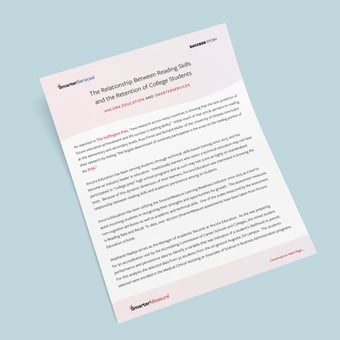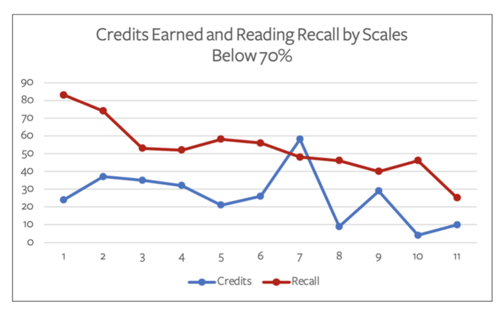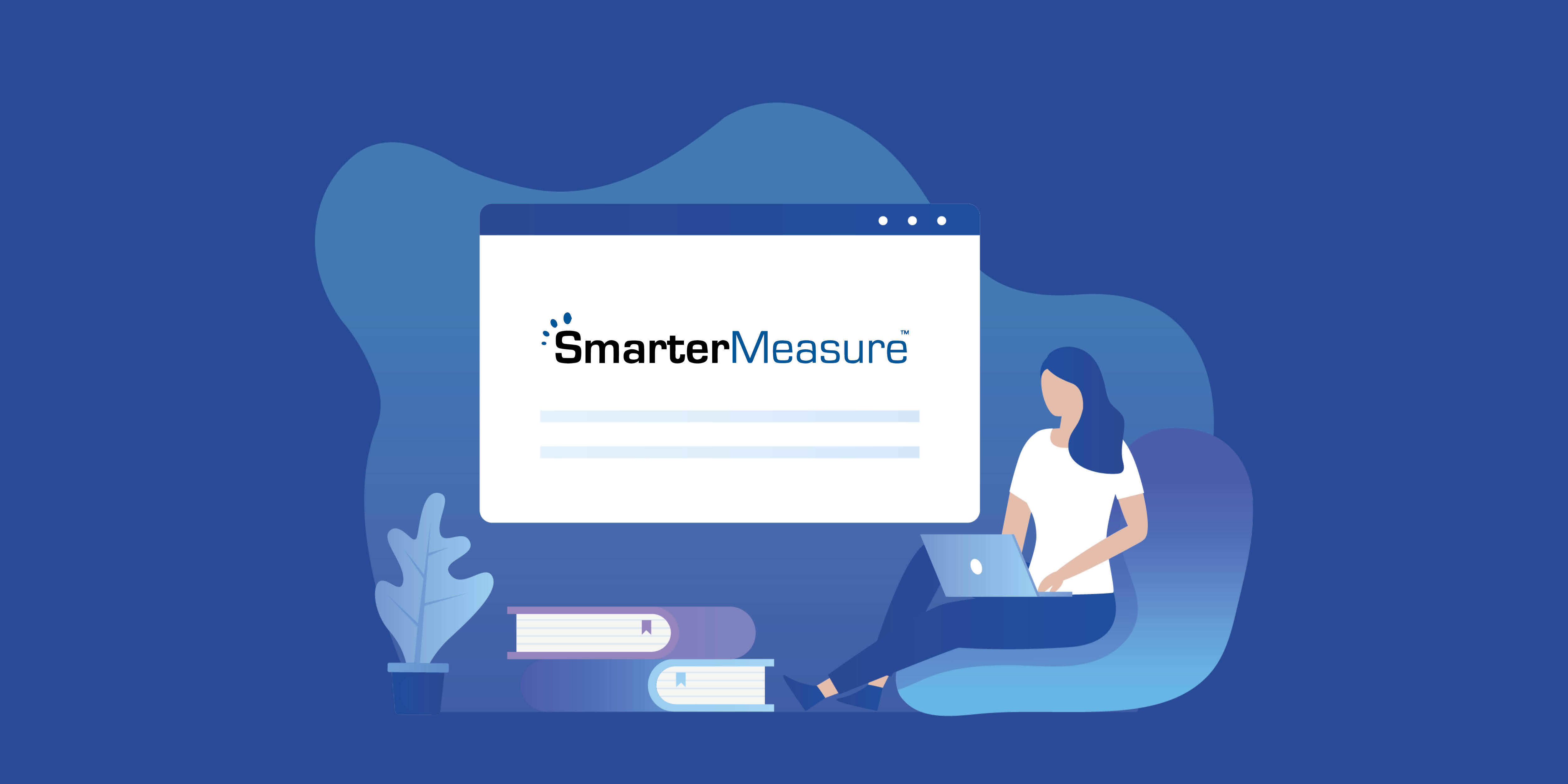
As reported in The Huffington Post, “new research across many countries is showing that the best predictor of future education achievement and life success is reading ability.” While much of that article pertains to reading at the elementary and secondary levels, Russ Finnie and Richard Muller of the University of Ottawa concluded their research by stating, “the largest determinant of university participation is the score on the reading portion of the PISA.”

We conducted a case study with Ancora Education using data from the SmarterMeasure Learning Readiness Indicator to determine the relationship between reading skills and the retention of college students. Keep scrolling to learn about our findings.
Want to read this case study on the go?
Reading Skills and College Retention
Ancora Education has been serving students through technical, skills-based training since 2013, and has become an industry leader in education. Traditionally learners who select a technical education may not have participated in “college prep” high school programs and as such may not score as highly on standardized tests. Because of this dynamic dimension of their learners, Ancora Education was interested in knowing the relationship between reading skills and academic persistence among its students.
Ancora Education has been utilizing the SmarterMeasure Learning Readiness Indicator since 2015 as a tool to assist incoming students in recognizing their strengths and opportunities for growth. The assessment measures non-cognitive attributes as well as academic and technical skills. One of the scales measured by the assessment is Reading Rate and Recall. To date, over 167,000 SmarterMeasure assessments have been taken from Ancora Education schools.
Stephanie Nadeja serves as the Manager of Academic Records at Ancora Education. As she was preparing for an accreditation visit by the Accrediting Commission of Career Schools and Colleges, she mined student performance and persistence data to identify a variable that was indicative of a student’s likelihood to persist. For this analysis, she selected data from 52 students from the on-ground Augusta, GA campus. The students selected were enrolled in the Medical Clinical Assisting or Associate of Science in Business Administration programs.
As indicated in the table below, she noted a strong relationship between scores on the Reading Rate and Recall scale of the SmarterMeasure Learning Readiness Indicator and the average number of academic credits earned.
| SmarterMeasure Scale Scores Below 70% | # of Students in Category | Average # of Credits Earned | Average of Reading Recall | Average of Reading Rate (WPM) | Reading Rate Comment |
| 1 | 3 | 24 | 83% | 128 |
Normal Rate |
| 2 | 5 | 37 | 74% | 165 | Normal Rate |
| 3 | 6 | 35 | 53% | 946 | Scanned |
| 4 | 5 | 32 | 52% | 205 | May Struggle |
| 5 | 8 | 21 | 58% | 187 | May Struggle |
| 6 | 6 | 26 | 56% | 1191 | Scanned |
| 7 | 5 | 58 | 48% | 237 | May Struggle |
| 8 | 6 | 9 | 46% | 3216 | Scanned |
| 9 | 3 | 29 | 40% | 747 | Scanned |
| 10 | 3 | 4 | 46% | 3566 | Scanned |
| 11 | 2 | 10 | 25% | 3424 | Scanned |
| TOTAL | 52 | 27 | 54.62 | 1092 |
The graph below illustrates from this data that the more SmarterMeasure scales that the student scored a 70% or lower on which indicates an undesirable level of readiness (X axis), that their reading recall declines as well as typically their number of credit hours completed.

It is relevant to note that the Reading Recall scale of the SmarterMeasure Learning Readiness Indicator is designed not to quantify prior content knowledge, but comprehension of a passage recently read. To achieve this the topics of the reading passages are about obscure topics about which most test takers have little prior knowledge. The assessment then asks questions about the passage such as “What was the main topic?” “What was not mentioned in the passage?” “What is the sequence of events in the passage?” etc. This structure makes it difficult for a person to “game the assessment” by taking the assessment without reading the passage.
Also, of significance in understanding this data is the fact that the average adult reading speed when reading academic content for comprehension is around 250 words per minute. Test takers whose reading rate was substantially higher are not demonstrating excellent reading speed but are indeed just skimming or skipping the reading section. This behavioral factor is telling in and of itself in that it is indicative of a learner who self-selects short cuts to assignment completion.
Dr. Mac Adkins, Founder and Chief Academic Officer for SmarterServices, commented that this information is compelling, especially for students at technical schools whose prior academic backgrounds may not have equipped them with the reading skills needed for persistence and success in a collegiate program. Schools are encouraged to evaluate a learner’s reading abilities early in the learner experience and if deficiencies in reading are noted, remediation and support should be immediately offered.
Stephanie Nadeja added that of these students the most common reason (48%) for withdrawal is failure to attend in-class sessions. She observed that poor performance on a reading skills assessment is typically indicative of a student who may quickly become so frustrated by the collegiate learning experience that they soon withdraw. It is imperative that students be assessed at the beginning of their program with support being immediately provided to hopefully avoid this early frustration level thereby fostering student retention.
Learn more and take this case study on the go!

To learn more about how your institution can help increase your students' success with the SmarterMeasure Learning Readiness Assessment, click here to learn more or to schedule a demo with us.
Want to take this case study on the go or share it with your colleagues?



.jpg)


